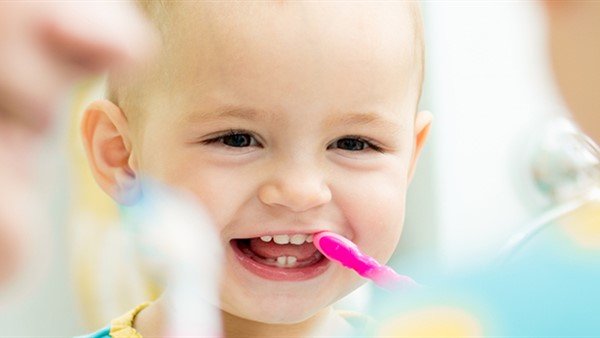
Visiting the dentist is something that can make kids apprehensive at first because of the bright lights, dental tools and loud sounds. That is why it’s important to start children off with frequent dental visits at an early age. Children should be visiting the dental office at least twice a year for dental cleanings and exams. If they have cavities, they will need them fixed promptly so they don’t need extensive dental work. Here are some services we offer for children that’s safe for kids and some tips to keep their mouths healthy and clean!
These visits are especially beneficial for children. The most important part of the first few dental visits is for an infant to become comfortable for a dentist. When this relationship is established early, and dental visits happen biannually, children will grow up knowing they need to visit the dentist. Parents will be alongside infants for visits for several years, and infants can even be in a parent’s lap for their exams. With regular dental visits for infants:
- They can avoid tooth decay that can lead to premature tooth loss.
- Toddlers can become familiar with dental visits, leading to less dental phobia as they grow.
- The baby teeth can come in correctly, setting a patient up for great oral health for life.
- Children learn early how to properly take care of their oral health.
- Bite and alignment issues can be caught early, preventing extensive procedures later on.
Take Care of Children’s Teeth at Home
When your child’s first tooth comes into the mouth, you will have to start proper oral care for your infant, as they won’t be able to care for their own teeth until they’re about 3 or 4.
The front teeth will come into the mouth first, followed by the bottom teeth and that pattern will continue on top and bottom until 20 teeth are in the mouth. The teeth will fall out the same way starting around age 7 or 8 through age 12 and 13. For your child’s teeth, you want to make sure the tooth (or teeth) is getting brushed at least twice a day. Use a rice-sized amount of toothpaste for infants and pea-sized for children. Brush for 2 minutes each time. Floss with flossers (because they are easier for children) 1-2 times a day once the teeth move closer together.
Mouthwash is not safe for most children unless it is made specifically for children. Only use mouthwash or fluoride specifically given to you by a dentist for your child. The best way to avoid cavities is to follow the guidelines for brushing and flossing. You also want to limit your child’s sugar intake. The American Heart Association recommends that infants get zero sugar throughout the day, as added sugars is not a nutrient that the body needs. Children 2-18 should have no more than 6 grams a day. That will limit acidic plaque production the mouth makes that comes directly from eating sugar. That plaque is a sticky substance made in the mouth when sugar is eaten and it’s what decays the teeth.


 Español
Español 

